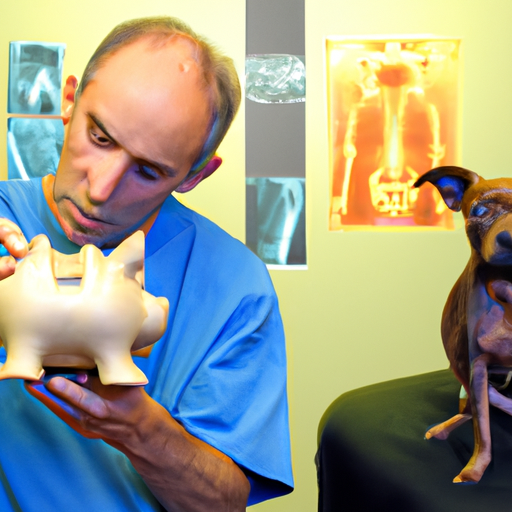When it comes to our beloved canine companions, their health is paramount. One common health issue that many dog owners encounter is hip dysplasia. This condition can significantly affect your dog’s quality of life, and in certain cases, surgical intervention may be necessary. But how much does hip dysplasia surgery for dogs cost? Let’s delve into the various factors that contribute to the price of this critical procedure.
Table of Contents
- Understanding Hip Dysplasia in Dogs
- Types of Hip Dysplasia Surgery and Their Costs
- Factors Affecting the Cost of Hip Dysplasia Surgery
- Post-Surgery Care and Additional Expenses
- How to Financially Prepare for Your Dog’s Surgery
- Frequently Asked Questions
Key Takeaways
- Hip dysplasia is a common condition in dogs that can lead to severe pain and mobility issues.
- The cost of hip dysplasia surgery can range from $1,500 to $7,000, depending on the type of surgery, your location, and the specific needs of your dog.
- Post-surgery aftercare and potential complications can also add to the overall cost.
- Financial planning and pet insurance can help offset the cost of surgery.
Understanding Hip Dysplasia in Dogs
Hip dysplasia is a genetic disorder where a dog’s hip joint does not develop correctly. This leads to instability and can eventually cause arthritis, pain, and mobility issues. Breeds such as German Shepherds, Labrador Retrievers, and Bulldogs are particularly susceptible to this condition. You can learn more about hip dysplasia and its symptoms from this source.
Types of Hip Dysplasia Surgery and Their Costs
There are several surgical options available for treating hip dysplasia, each with its own associated costs.
- Femoral Head Ostectomy (FHO): This procedure involves removing the head of the femur to alleviate discomfort. It is generally recommended for smaller dogs and costs around $1,500 to $2,000.
- Double or Triple Pelvic Osteotomy (DPO/TPO): Best suited for younger dogs with less severe dysplasia, this surgery adjusts the alignment of the hip joint to improve function. The cost ranges from $2,500 to $3,000.
- Total Hip Replacement (THR): This surgery, which replaces the entire hip joint with artificial components, is the most expensive but also the most effective long-term solution, especially for larger dogs. The average cost is between $5,000 and $7,000.
Factors Affecting the Cost of Hip Dysplasia Surgery
Several factors will influence the final cost of hip dysplasia surgery for your dog. These include the severity of the condition, the type of surgery, the vet’s expertise, and even your geographic location. For example, veterinary services are often more expensive in urban areas compared to rural ones. Your dog’s size and weight can also impact the cost, as larger dogs may require more complex surgery and aftercare.
OneTopDog provides more information on understanding dog health and handling the associated costs.
Post-Surgery Care and Additional Expenses
Beyond the direct costs of the surgical procedure, you should also consider the cost of post-operative care. This includes pain medication, follow-up visits, physiotherapy, and potentially, special dietary needs. These additional costs can range from $500 to $1,000.
It’s also worth noting that complications may arise during or after surgery, leading to unexpected costs. For instance, your dog may require additional medications, extended hospital stays, or even secondary surgeries.
How to Financially Prepare for Your Dog’s Surgery
Planning ahead can help manage the financial burden of your dog’s hip dysplasia surgery. Here are a few strategies:
- Pet Insurance: Pet insurance can cover a significant portion of the surgical cost, though it’s important to ensure the policy covers hip dysplasia surgeries.
- Savings: Setting aside a small amount each month for potential pet health issues can help you prepare for unexpected costs.
- Payment Plans: Some veterinary clinics offer payment plans, allowing you to spread the cost over a period of time.
OneTopDog offers resources on pet insurance and financial planning for pet owners.
Frequently Asked Questions
Q: Can hip dysplasia in dogs be treated without surgery?
A: Yes, mild cases of hip dysplasia can often be managed with pain medication, weight control, and physical therapy. However, severe cases typically require surgical intervention for the best outcome.
Q: Is the cost of hip dysplasia surgery covered by pet insurance?
A: It depends on the policy. Some insurance companies consider hip dysplasia a pre-existing condition and may not cover it. Always check the specifics of your policy.
Q: How long is the recovery period after hip dysplasia surgery?
A: The recovery period can vary from a few weeks to several months, depending on the type of surgery and the dog’s overall health.
In summary, while the cost of hip dysplasia surgery for dogs can be significant, it is a critical step towards ensuring your furry friend’s comfort and quality of life.
For more tips on managing your pet’s health, check out OneTopDog.



